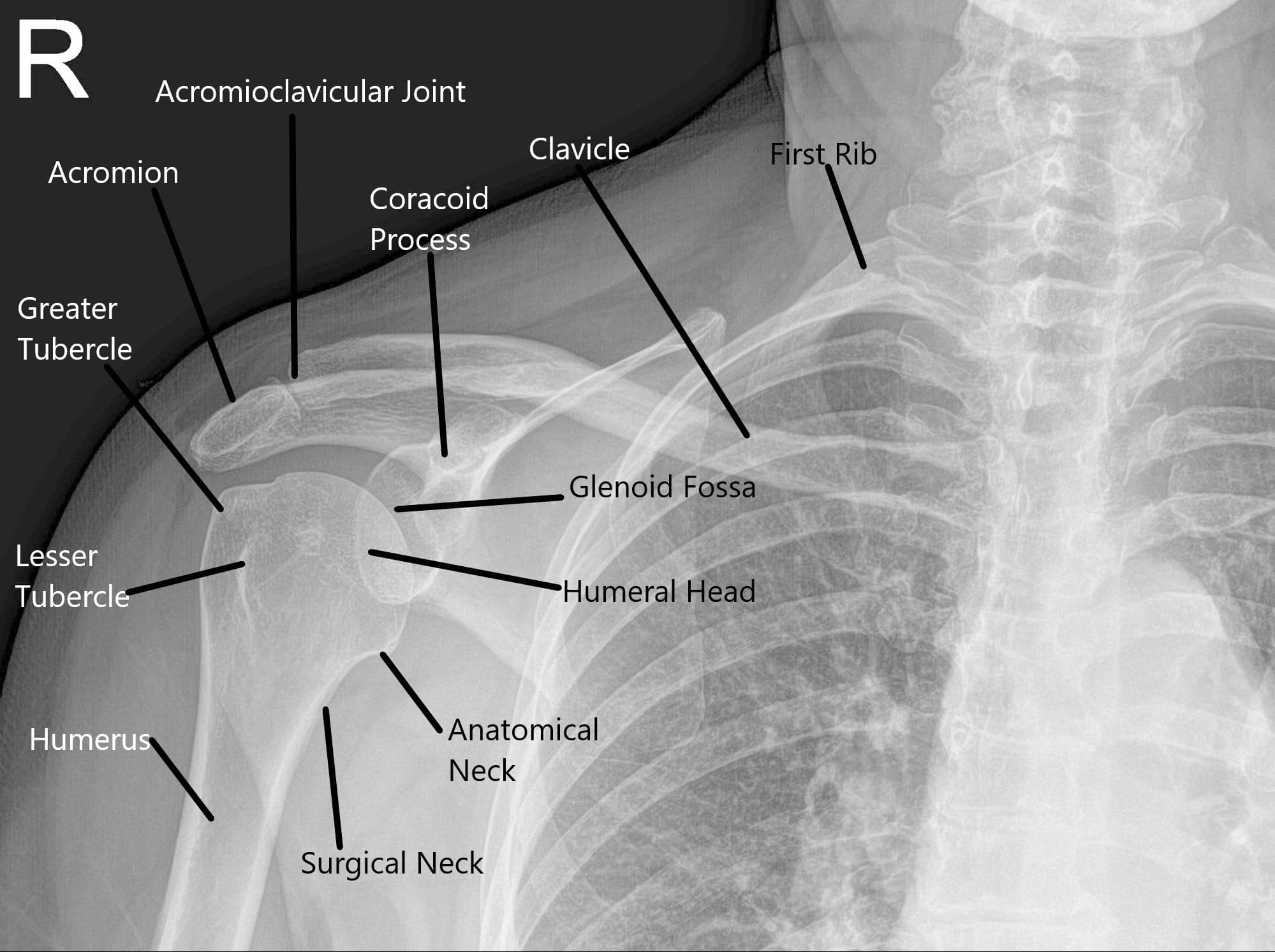Snapping Shoulder – Causes & Management
A snapping/grinding/popping sound/feeling which may be audible is commonly a result of snapping scapula syndrome. The sound is produced as a result of the grinding of the tissues between the ribcage and the wing bone. The sound may also result from cavitation of air bubbles in the shoulder joint fluid.
The shoulder joint is a large ball and socket joint. The upper end of the arm bone (humerus) forms the ball. The socket is formed by the outer side of the shoulder blade (scapula).
The outer end of the collar bone (clavicle) also forms a joint with the scapula (shoulder blade) (acromioclavicular joint). Various tendons and ligaments stabilize the shoulder joint and aid in its movement.
The shoulder blade lies on the back of the rib cage supported by muscles and ligaments. The shoulder blade glides over the ribcage on moving the arm through a various range of motions. Various muscles are attached to the shoulder blade which stabilizes it and helps move the arm.

X-ray of the shoulder joint in the AP view.
The symptoms of snapping scapula syndrome are pain, snapping sensation, swelling, and weakness in the arm. The snapping sound may be audible or felt like a grinding/clicking sensation.
Causes
The snapping shoulder is commonly found among young adults involved in repetitive overhead movements of the arm. Activities such as stacking overhead shelves, lifting weight, painting, and putting wallpapers may cause inflammation of the bursae. The snapping sound is accompanied by shoulder pain due to the bursa becoming inflamed.
Sports activities such as pitching baseball, swimming, racquet sports involve repeated overhead movements of the arm. This may lead to snapping shoulder syndrome. Athletes with a poor posture, incorrect position of the joint, training without strengthening are especially vulnerable.
Isolated events of injury to the ribs, shoulder blade, or upper end of the humerus may cause a snapping shoulder. Injuries may lead to fractures, muscle strains, or ligament sprains. The fractures of the ribcage and shoulder blade may result in a malunited bone. The resulting misshapen bone results in bumping into one another during motion and causing snapping sounds.
The subscapularis muscle and the serratus anterior muscle are present on the undersurface of the shoulder blade. The subscapularis muscle aid in the internal rotation of the shoulder and the serratus anterior helps prevent the winging of the scapula.
Any injury to the subscapularis and serratus anterior muscle may result in atrophy, scarring, tightness, or shrinkage of the muscles. This may result in loss of smooth gliding of the shoulder blade over the rib cage causing snapping sound and pain.
The bursae are small fluid-filled sacs that aid in the smooth gliding of the muscles and bones in motion. They provide cushioning action and reduce friction. The bursae may become inflamed due to overuse or improper joint action in sports.
Also known as scapulothoracic bursitis, resulting in bursae become swollen and cause pain in movements. There is a snapping sound due to increased friction between the ribcage and the scapula.
Certain benign tumors such as osteochondroma may also cause snapping sound. The tumor mechanically prevents the smooth gliding of the shoulder blade over the ribcage. The snapping sound can also be physiological or normal. The sound may result from cavitation/popping of air bubbles in the joint.
Diagnosis
The diagnosis of this condition is made after evaluation by a physician. The physician takes a detailed history of the events preceding the snapping sound and the involved activities. A physical examination of the shoulder blade, shoulder joint, and the neck are done. The physician may request radiological tests to further aid in the diagnosis.
An X-ray is done to look for bone malformations, fractures, and arthritis. A CT scan provides more detailed information compared to an X-ray. MRI utilizes magnetic waves to create images divided into slices. The soft tissues such as bursae, tendons, muscles, and ligaments of the joints are better visible on an MRI.
Management
The treatment options of snapping shoulder and scapula depend upon the underlying cause. Most cases of inflammation can be easily treated with conservative options.
Rest to the shoulder joint is important to allow recovery. The patients are advised to avoid/modify the activities causing snapping sound and pain. Icing at regular intervals helps reduce swelling and pain. The treatment plan included physical therapy that is aimed to strengthen the muscles and increase the movement of the scapula.
Non-steroidal anti-inflammatory medications such as ibuprofen and Aleve may be used to reduce pain and swelling. These medications are used with caution in patients with gastric ulcers, kidney disease, and bleeding tendencies.
Surgical management is generally undertaken when there is no relief from conservative management. In the case of inflamed bursae, the bursa may be excised surgically. The surgery may be performed traditionally with an open incision or using an arthroscope.
Arthroscopic excision involves the use of a tiny camera with a light source. The camera is inserted in the joint to look for anomalies. Similarly, pencil-shaped miniature instruments are inserted through buttonhole incisions to excise the diseased tissues and repair if needed.
In some cases, a part of the shoulder blade (upper and inner) is excised to allow for smooth gliding of the scapula. Surgical treatment is generally followed by physical therapy for achieving pain-free movements.
Read more about Shoulder Treatment here.
My name is Dr. Suhirad Khokhar, and am an orthopaedic surgeon. I completed my MBBS (Bachelor of Medicine & Bachelor of Surgery) at Govt. Medical College, Patiala, India.
I specialize in musculoskeletal disorders and their management, and have personally approved of and written this content.
My profile page has all of my educational information, work experience, and all the pages on this site that I've contributed to.

